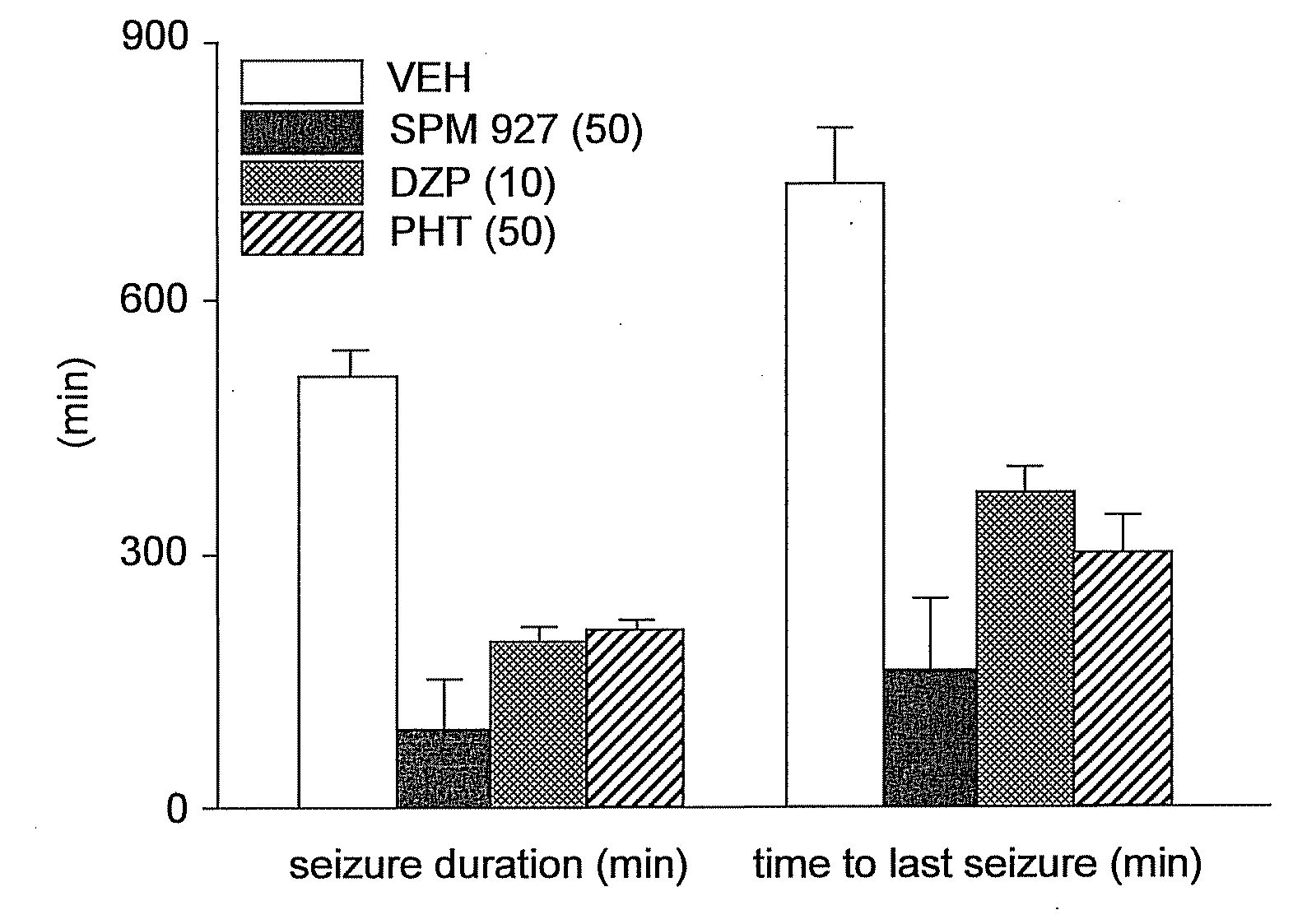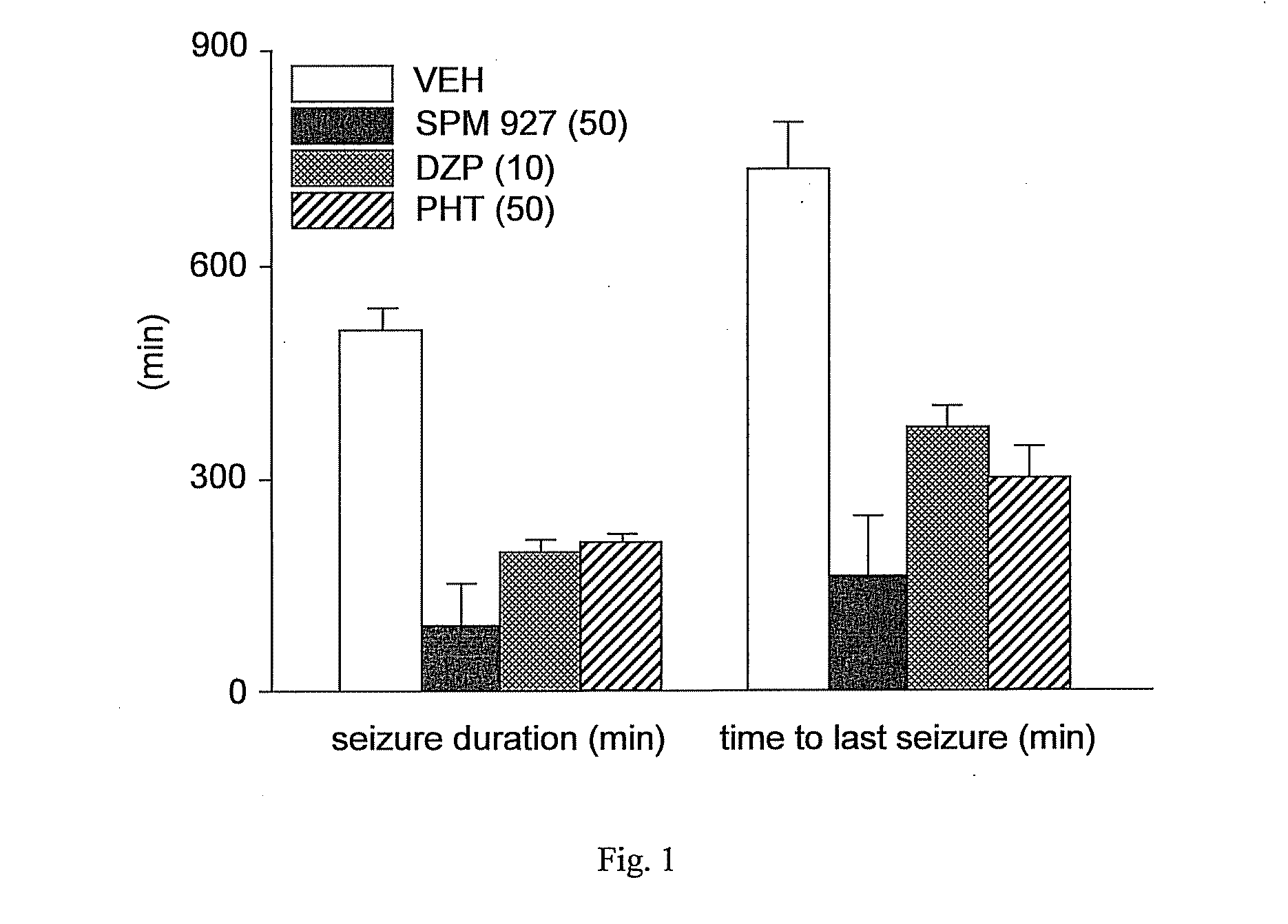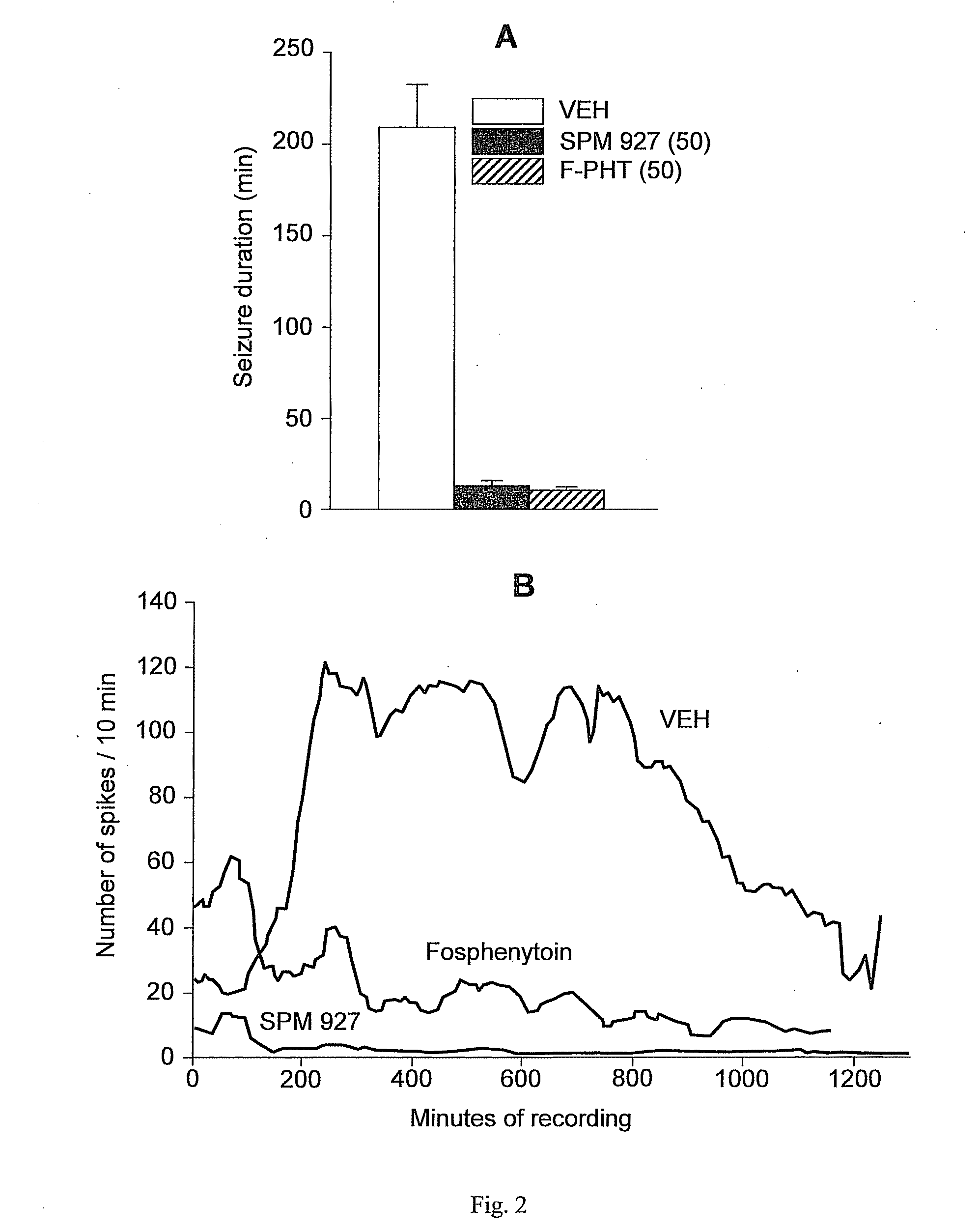Methods for treating status epilepticus and related conditions
a technology for epilepticus and related conditions, applied in the direction of biocide, drug composition, peptide/protein ingredients, etc., can solve the problems of high morbidity and mortality, hippocampus is exceptionally vulnerable to damage, and 40% of subjects will not respond, so as to reduce reduce the number of spikes, and the effect of reducing the cumulative ssse duration
- Summary
- Abstract
- Description
- Claims
- Application Information
AI Technical Summary
Benefits of technology
Problems solved by technology
Method used
Image
Examples
example 1
SPM 927 is Anti-Convulsive and Neuroprotective in Rat Models for Self-Sustaining Status Epilepticus
[0127]SPM 927 shows a more potent and effective anticonvulsant profile in animal models compared to other antiepileptic drugs (e.g. phenyloin, carbamazepine). SPM 927 is available as both an oral and an intravenous formulation. It was, therefore, of interest to determine the potential efficacy of SMP 927 in animal models of self-sustaining status epilepticus (SSSE).
experiment 1
rief Electrical Stimulation of the Perforant Path
[0128]Animals: The experiments were performed on male Wistar rats, 280-300 g (Simonsen Labs, Calif.). Animals were kept at a constant room temperature with 12 hours artificial dark-light cycle with free access to standard diet and tap water.
[0129]Surgery: Under ketamine (60 mg / kg) / xylazine (15 mg / kg) anesthesia, animals were implanted with a bipolar stimulating electrode into the angular bundle of the perforant path (4.5 mm to left lambda, 1 mm anterior to lambdoid fissure) and a bipolar recording electrode into the granule cell layer of the ipsilateral dentate gyrus (3.5 mm anterior to lambda, 2.2 mm left to sagittal fissure). Depth of both electrodes was optimized by monitoring the amplitude and waveform of the population spike evoked from the dentate gyrus by stimuli delivered through the perforant path (single square wave monophasic stimuli, 20 V, 0.1 ms delivered every 10 s).
[0130]Induction of self-sustaining status epilepticus (...
experiment 2
nduced SSSE (Homocysteine Injection)
[0146]Male Sprague-Dawley rats were prepared surgically with cobalt powder on the left frontal cortical surface.
[0147]Recording and stimulation protocol: Four epidural recording electrodes were arranged in a square grid (5 mm) over the cobalt lesion. EEG was monitored daily beginning 4-5 days following surgery. Status epilepticus was induced by i.p. injection of 5.5 mmol / kg homocysteine thiolactone whenever focal motor behaviour and EEG seizures were observed.
[0148]Drug administration: SPM 927 was administered (10-100 mg / kg) immediately following the second generalized tonic-clonic seizure (GTCS) occurring after homocysteine thiolactone injection. Rats were observed for 30 min following treatment.
[0149]Results: Table 2 shows the mean number of GTCS occurring in the 30 min following treatment with SPM 927. The number of rats experiencing GTCS reduced in a dose-dependent fashion. In addition, SPM 927 potently reduced the mean number of GTCS and prol...
PUM
| Property | Measurement | Unit |
|---|---|---|
| pH | aaaaa | aaaaa |
| thick | aaaaa | aaaaa |
| time | aaaaa | aaaaa |
Abstract
Description
Claims
Application Information
 Login to View More
Login to View More - R&D
- Intellectual Property
- Life Sciences
- Materials
- Tech Scout
- Unparalleled Data Quality
- Higher Quality Content
- 60% Fewer Hallucinations
Browse by: Latest US Patents, China's latest patents, Technical Efficacy Thesaurus, Application Domain, Technology Topic, Popular Technical Reports.
© 2025 PatSnap. All rights reserved.Legal|Privacy policy|Modern Slavery Act Transparency Statement|Sitemap|About US| Contact US: help@patsnap.com



